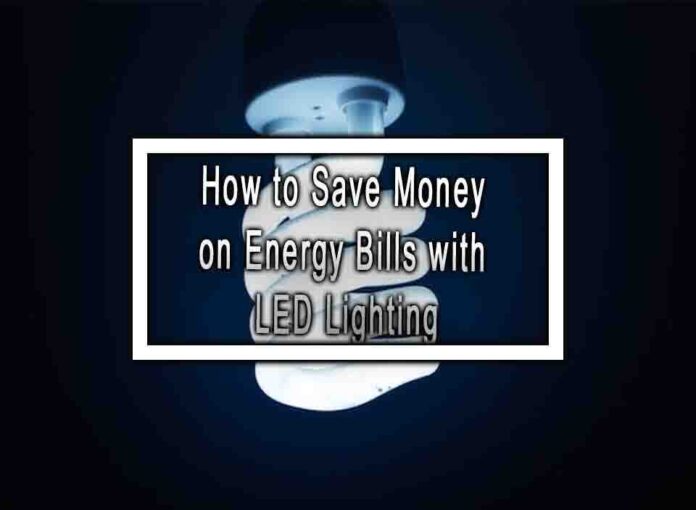LED (Light Emitting Diode) lighting is known for its energy efficiency and cost-saving benefits. Here’s how you can save money on energy bills by switching to LED lighting:
Energy Efficiency:
- LED lights consume significantly less energy than traditional incandescent and even CFL (Compact Fluorescent Lamp) lights. This efficiency translates to lower energy consumption and reduced energy bills.

Long Lifespan:
- LED lights have a much longer lifespan compared to incandescent and CFL lights. They can last up to 25,000 to 50,000 hours or more. This means fewer replacements, saving you money on both the cost of bulbs and the labor to change them.
Lower Heat Output:
- LED lights generate less heat compared to traditional bulbs, which means your cooling system won’t have to work as hard during warmer months. This contributes to energy savings.
Instant On/Off:
- LED lights provide instant and consistent illumination when turned on, unlike some other types of bulbs that take time to reach full brightness. This eliminates the need for leaving lights on to avoid frequent on/off cycles, saving energy.
Dimmable Options:
- Many LED lights are dimmable, allowing you to adjust the light output based on your needs. Dimming the lights reduces energy consumption and extends the lifespan of the bulbs.
Directional Light:
- LED lights emit light in specific directions, making them ideal for task lighting or focused illumination. This reduces the need for multiple bulbs to light up a space effectively.
Energy-Efficient Bulbs and Fixtures:
- Look for LED bulbs and fixtures that are ENERGY STAR certified. These products meet strict energy efficiency and performance criteria, ensuring you’re getting the most energy savings. Learn more about natural gas plan and ga gas prices to help you find the right plan that fit your needs.
Choose the Right Color Temperature:
- LED lights come in various color temperatures, ranging from warm to cool. Opt for warmer color temperatures (around 2700K to 3000K) for indoor spaces, as they provide a cozy ambiance without over-illumination.
Unplug or Use Timers:
- Incorporate timers or smart plugs to control the usage of LED lights in areas where they might be accidentally left on when not needed.
Upgrade Outdoor Lighting:
- Replace traditional outdoor lighting fixtures with LED options. This not only saves energy but also enhances security and visibility.
Incentives and Rebates:
- Check with your local utility company or government programs for any incentives, rebates, or discounts offered for switching to energy-efficient LED lighting.
Educate Family Members and Roommates:
- Encourage everyone in your household to turn off lights when leaving a room to maximize energy savings.
While LED bulbs may have a higher upfront cost compared to traditional bulbs, their energy savings and longer lifespan make them a cost-effective investment in the long run. Making the switch to LED lighting is not only beneficial for your wallet but also contributes to reducing energy consumption and your carbon footprint.











